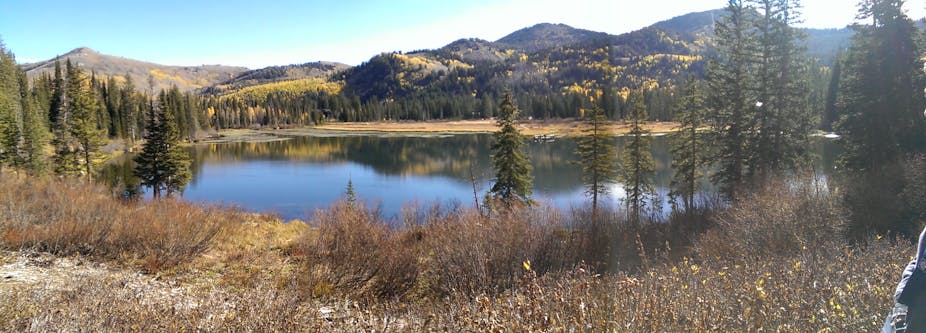In the American West, unprecedented droughts have caused extreme water shortages. The current drought in California and across the West is entering its fourth year, with precipitation and water storage reaching record low levels.
Such drought and water scarcity are only likely to increase with climate change, and the chances of a “megadrought” – one that lasts 35 years or longer — affecting the Southwest and central Great Plains by 2100 are above 80% if greenhouse gas emissions are not reduced.
Droughts are currently ranked second in the US in terms of national weather-related damages, with annual losses just shy of US$9 billion annually. Such economic impacts are likely to worsen as the century progresses.
As the frequency and severity of droughts increases, the successful protection of watersheds to capture, store and deliver water downstream in catchments will become increasingly important, even as the effective protection of watersheds becomes more challenging.
Since the early 2000s, the prevailing view in watershed protection is that paying upstream resource users for avoiding harmful activities, or rewarding positive action, is the most effective and direct method. This is the case of the Catskills watershed in New York, where environmentally sound economic development is incentivized.
There are, however, many different ways communities can invest in watersheds to harness the benefits they provide downstream communities.
In a recently published paper in the journal Ecosystem Services, we highlight an alternative option with the example of Salt Lake City’s successful management of the Wasatch watershed. Instead of offering financial incentives for the “ecosystem services” provided by this watershed, planners use regulations to secure the continued delivery of water, while allowing for recreational and public use.
The successful management of the Wasatch demonstrates that an overreliance on markets to deliver watershed protection might be misguided.
Perhaps part of the reason for this overreliance on market-based tools is a paucity of alternative success stories of watershed management. We note that the Wasatch story has been largely absent from much of the literature that discusses the potential of investing in watersheds for the important services that they provide. This absence results in an incomplete understanding of options to secure watershed ecosystem services, and limits the consideration of alternative watershed conservation approaches.
The Wasatch management strategy
The Wasatch is a 185-square-mile watershed that is an important drinking water source to over half a million people in Salt Lake City. This water comes from the annual snowmelt from the 11,000-foot-high peaks in the Wasatch range, which act as Salt Lake City’s virtual reservoir.
Salt Lake City’s management of the Wasatch watershed is somewhat unusual in contemporary examples of watershed protection in that it is focused on nonexclusionary regulation – that is, allowing permitted uses – and zoning to protect the urban water supply. For instance, the cities of Portland, Oregon and Santa Fe, New Mexico have worked with the US Forest Service to prohibit public access to source water watersheds within forests to protect drinking water supplies. In contrast, the governance of the Wasatch allows for public access and both commercial and noncommercial activities to occur in the watershed, such as skiing and mountain biking. It also imposes restrictions on allowable uses, such as restricting dogs in the watershed.
This permitted use, socially negotiated, helps mitigate the potential trade-offs associated with protection activities.
The suite of policies that protect the Wasatch do not include a “payments for ecosystem services” or other market-based incentives component, nor has there been any discussion of compensating potential resource users in the watershed for foregone economic opportunities. By not having a market-based incentives component, the Wasatch example provides an alternative regulatory-based solution for the protection of natural capital, which contrasts with the now prevalent market-based payments approach.
Importantly, the Wasatch example reinforces the rights of citizens to derive positive benefits from nature, without these being mediated through the mechanism of markets. In most payment-based systems, potential harm to a watershed is avoided by organizing beneficiaries so that they can compensate upstream resource users for foregone activities. In contrast, reliance on regulation and permitted activities supports the ‘polluter pays principle,’ which might be more appropriate in many circumstances.
Why we need alternative strategies
With the American West facing ever-increasing droughts, policymakers will be faced with the increasingly difficult task of protecting and preserving water supplies. Thus, awareness of alternative, successful strategies of watershed protection and management is crucially important.
The Wasatch offers an important example of how natural capital can be instrumentally and economically valued, but conserved via regulatory approaches and land use management and zoning, rather than a reliance on the creation of water markets, which are often misplaced and not suitable. Bringing stakeholders together to negotiate allowable uses that preserve critical watershed functions is an additional option within the policymaker’s toolkit, and one that is at risk of being forgotten in the rush to payment-based systems.

